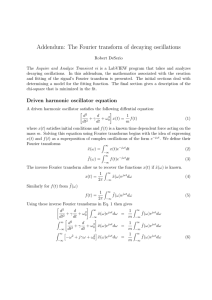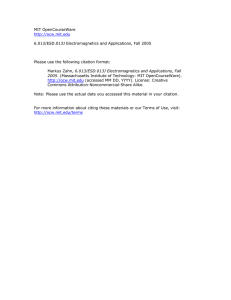Document 13352601
advertisement
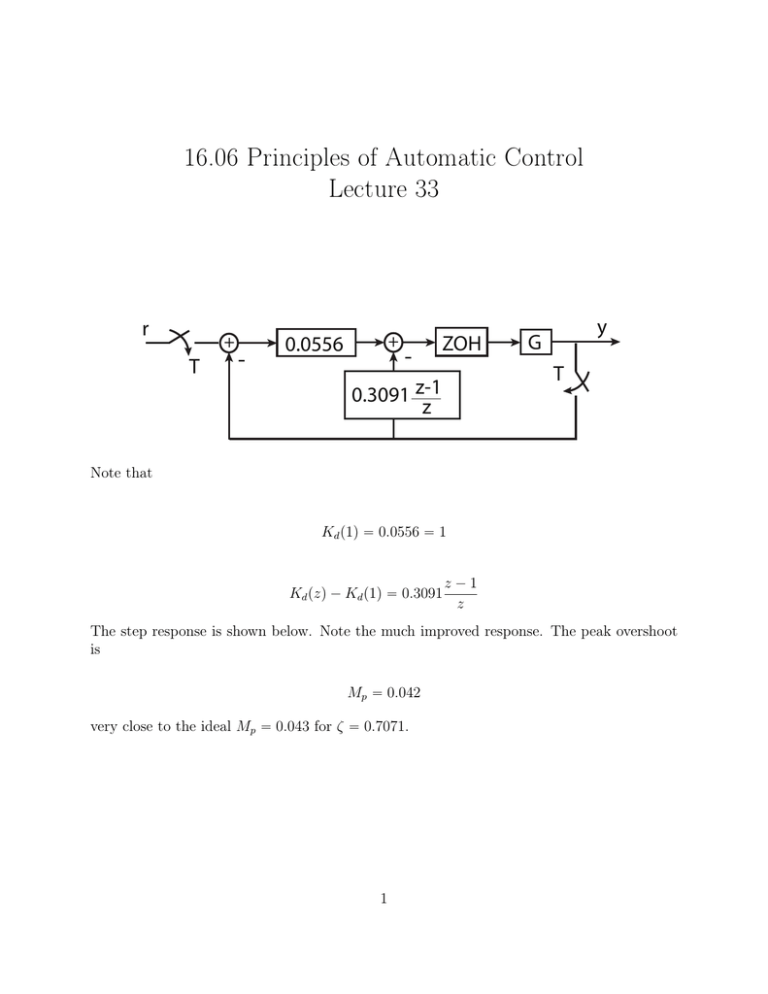
16.06 Principles of Automatic Control
Lecture 33
r
+
T
-
0.0556
+
-
ZOH
y
G
T
0.3091 z-1
z
Note that
Kd p1q “ 0.0556 “ 1
Kd pzq ´ Kd p1q “ 0.3091
z´1
z
The step response is shown below. Note the much improved response. The peak overshoot
is
Mp “ 0.042
very close to the ideal Mp “ 0.043 for ζ “ 0.7071.
1
Discrete Design vs. Emulation
The text argues that discrete design should be used if
ωs “
2π
ă 10ωn
T
or
ωn T ą
π
« 0.63
5
I disagree. If the effective time delay is taken into account, emulation works well out to
ωc T « 1
and maybe higher. But that is close to the upper limit on how high it is possible to cross
over due to T {2 time delay.
T
ωc ď
2
"
1, less cons. upper limit
0.6, more cons. upper limit.
So emulation should work in all but the most severe cases.
2
The W ´Transform
The W ´ Transform is used to allow the use of classical continuous time design techniques
(including Bode plots) on discrete-time systems.
Recall that the Tustin transform is
sÑ
zÑ
2 z´1
T z`1
1 ` sT {2
1 ´ sT {2
So there is no confusion, we use the variable W instead of s, so the W ´transform is
zÑ
1 ` W T {2
1 ´ W T {2
Can show that this mapping between z and W :
• Is one to one (unique W for each z, vice-verse).
• Maps the unit disk to the left half plane.
Note that the W-transform “warps” frequencies:
2
T
2
“
T
2
“
T
2j
“
T
“jν
W “
z´1
z`1
ejωT ´ 1
(on unit circle)
ejωT ` 1
e`jωT {2 ´ e´jωT {2
(multiply top and bottom by e´jωT {2 )
e
`jωT {2 ` e´jωT {2
` ωT ˘
tan
(Trig. identities)
2
(ν=frequency in W domain)
Therefore,
ν“
tanpωT {2q
T {2
where ω “physical frequency,
3
ν “apparent frequency in W.
Example
Gd pzq “0.004934
z ` 0.9867
pz ´ 0.9802q2
T “0.01
Design a controller Kd pzq so that
• P M “ 50˝
• ωc “ 50 r/s
• Kp “ 5000
First, find GpW q using MATLAB:
gw=d2c ( gd , ’ t u s t i n ’ )
Result is
GpW q “ 25
p1 `
W
qp1
30,000
´
W
q
200
p1 ` W {2q2
Zero at W “ ´30, 000 can be ignored, but note presence of RHP zero at W “ `200.
Alternatively, map poles and zeros by
W “
2 z´1
T z`1
4
MIT OpenCourseWare
http://ocw.mit.edu
16.06 Principles of Automatic Control
Fall 2012
For information about citing these materials or our Terms of Use, visit: http://ocw.mit.edu/terms.
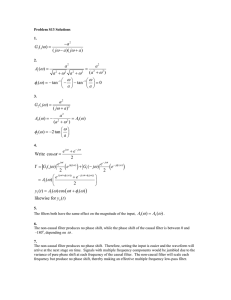
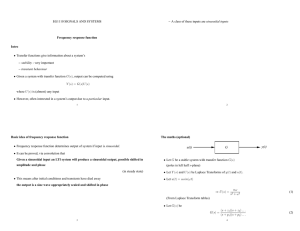
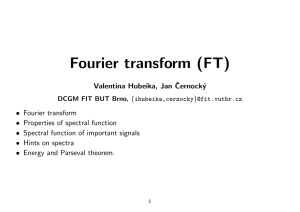
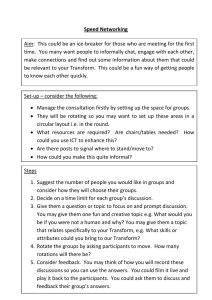
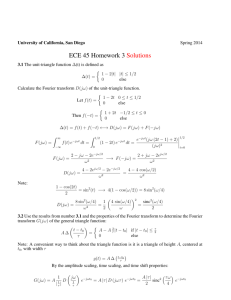
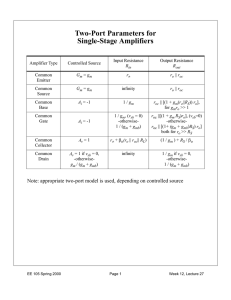
![an d f dt d f dt n−1 +K+ a0f = C cos(ωt + φ) f(t) = Re F(ω)e Re[W]= W](http://s2.studylib.net/store/data/018141773_1-fa0155744d9056a1325a7a0fdcdd3dfa-300x300.png)


